Paro Manene (Paro Ndalo Machon): Rethinking Luo History Through Photograph Collections at the Pitt Rivers Museum, University of Oxford.
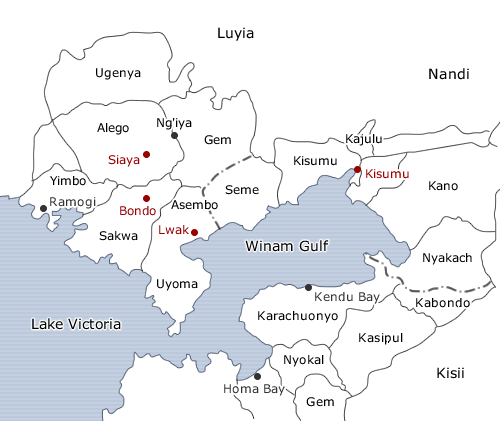
Map of Luoland showing exhibition venues in red.
Since 2002 the Pitt Rivers Museum has worked with the Luo archaeologist and cultural historian Gilbert Oteyo on several small research projects to enhance the Museum's documentation about both its Luo material artefacts and photograph collections.
The Museum has approximately 130 objects and 450 photographs relating to the Luo - a modestly sized collection but one that is considered historically important. The two most significant collections of photographs are by two notable early figures in Luo ethnography whose writings pioneered ethnographic research in the region [1] , Charles W. Hobley (1867-1947) and Sir Edward Evan Evans Pritchard (1902-1973). Their research publications on the Luo makes their visual record of particular historical interest.
The Luo are the third largest ethnic group in Kenya, and live mainly in Nyanza region close to Lake Victoria (Victoria Nyanza). They are linguistically and culturally related to other Nilotic language groups of Sudan and Uganda, which makes the Luo an important adjunct to the Museum's ongoing research into the ethnography and cultural history of Southern Sudan , since it is from this region that historians have traced their migration into Kenya [2] .
Both Hobley and Evans-Pritchard were interested in Luo political organization and culture more generally and for this reason photographed a number of chiefs and other leading individuals. This interest shaped their photograph collections and makes them particularly significant for Luo historians as well as the families and communities represented.
Evans-Pritchard (his collection numbers around 300 images) also took a number of photographs of a more everyday nature, especially portraits of people whom he met incidentally and whose identities are only just emerging through field investigation. A junior wife of one chief named Owuor was able to identify him from the photograph (the only one known of him) during a brief visit by Oteyo in 2003, and a copy of this particular image subsequently presented to the family in 2007 has now become a cherished family possession.
In 2005 Chris Morton took up a three-year HEFCE-funded Career Development Fellowship at the Pitt Rivers Museum to research the photograph collections of E. E. Evans-Pritchard. Although Morton had spent the previous two years building a research catalogue of Evans-Pritchard's Southern Sudan photographs as part of the Museum's AHRC project 'Recovering the Material and Visual Cultures of the Southern Sudan: a Museological Resource' [3] , Evans-Pritchard's Luo material had not been included in that project.
As an adjunct to the Sudan project however, Oteyo was invited to examine Evans-Pritchard Luo photographs to explore the potential for extending the project in the future. In October 2005 a small amount of funding [4] was obtained to enable an exhibition to be planned in several rural venues in Nyanza. With the assistance of the National Museums of Kenya, Bondo Town Council and the British Institute in Eastern Africa, these exhibitions finally took place in February 2007, featuring transportable display panels showing approximately one hundred photographs with English captions and commentaries by Gilbert Oteyo discussing early twentieth-century Luo culture and archaeology.
The exhibitions were entitled Paro Manene (a Luo phrase that roughly translates as 'reflecting on the past'), and were shown in the following places:
Lwak - Parish Church Hall - 9th to 11th February 2007
Bondo - Town Council Hall - 12th to 14th February 2007
Siaya - Farmers Training Centre (FTC) Hall - 15th to 17th February 2007
(Siaya was an important location for many of Evans-Pritchard's photographs of 1936)
Kisumu - Kisumu Museum - 19th to 23rd February 2007
Gilbert Oteyo was assisted during the exhibitions by Perez Achieng, Washington Ouma Ogutu and Ezekiel Ochieng Otiende. In addition to talking to numerous visitors about Luo history, Oteyo also carried out a period of field research in the region, locating a number of families related to named individuals in the photograph collections. In particular, Oteyo was able to visit the families of Ezekiel Onyango , Jacob Odawo and Ismail Owuor Molo , and to present them with framed copies of the portraits taken by E. E. Evans-Pritchard in 1936.
The links to the left provide access to the exhibition sections that formed the basis for the Paro Manene exhibitions. The sections and commentaries were devised and written by Gilbert Oteyo, and edited by the Museum. The Paro Manene exhibition sections and commentaries, and the online version presented here, is therefore an authored pathway through the collections by a Luo scholar rather than a Pitt Rivers Museum online exhibition and should be understood as such. The Museum welcomes correspondence with other researchers who may wish to engage with the material and provide alternative pathways, with the potential for making them available on this website.
Christopher Morton
Head of Photograph and Manuscript Collections
[1] Hobley, C.W., 1903 'British East Africa: Anthropological Studies in Kavirondo and Nandi', Journal of the Anthropological Institute of Great Britain and Ireland , Vol. 33, 325-359.
Evans-Pritchard, E. E., 1949, 'Luo Tribes and Clans'. Rhodes-Livingstone Journal . VII 24-40.
-1950 'Marriage Customs of the Luo of Kenya' Africa. XX, (2), 132-42.
[2] Ogot, B., 1967, The History of the Southern Luo (Nairobi: East African Publishing House)
[3] Recovering the Material and Visual Cultures of the Southern Sudan: A Museological Resource , an AHRC-funded project at the Pitt Rivers Museum, led by Jeremy Coote and Elizabeth Edwards, 2003-2005. See http://southernsudan.prm.ox.ac.uk/ .
[4] The Paro Manene exhibition was enabled by HEFCE funds supporting the Career Development Fellowship (CDF) at the Pitt Rivers Museum, University of Oxford, as well as invaluable support from the British Institute in Eastern Africa in the form of a field assistant, and an exhibition venue at Kisumu Museum provided by National Museums of Kenya.
Exhibition images
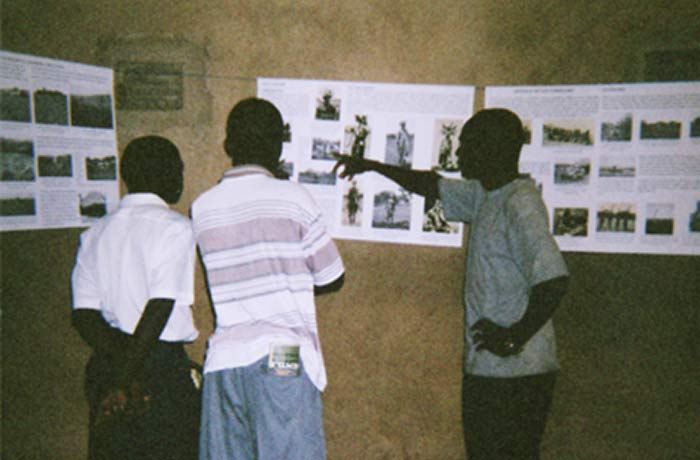
Exhibition assistant discussing a panel with visitors at Lwak Parish Church Hall - 9th to 11th February 2007. © Pitt Rivers Museum.
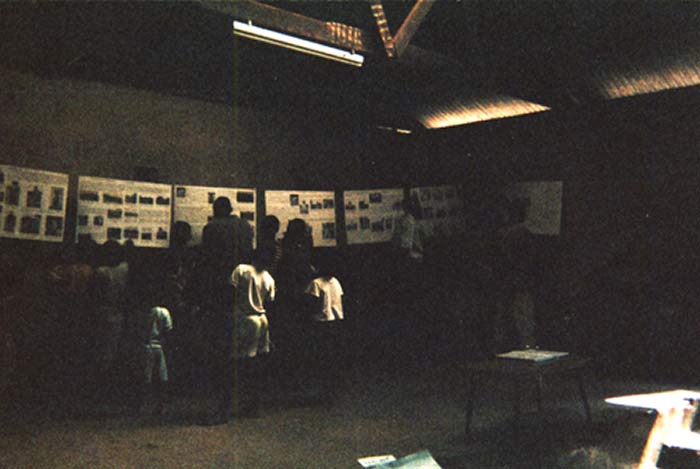
An atmospheric view of the dark interior of Lwak Parish Church Hall - 9th to 11th February 2007. © Pitt Rivers Museum.
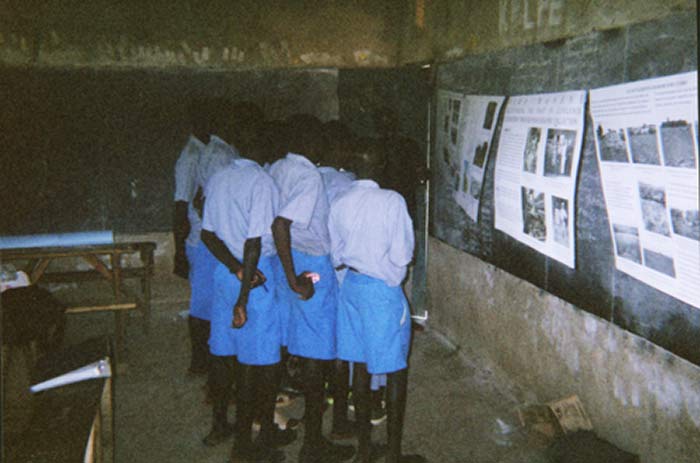
School children on a visit to the exhibition at Lwak Parish Church Hall - 9th to 11th February 2007. © Pitt Rivers Museum.
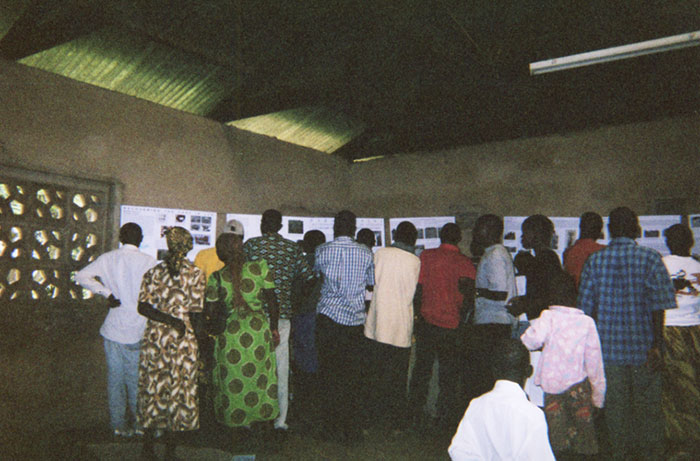
Visitors gathered around the panels displayed at Lwak Parish Church Hall - 9th to 11th February 2007. © Pitt Rivers Museum.
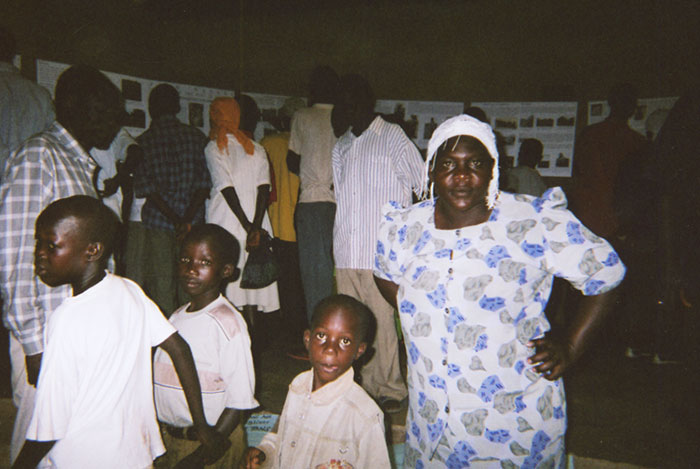
A mother with her children exploring the panels at Lwak Parish Church Hall - 9 th to 11 th February 2007. © Pitt Rivers Museum.
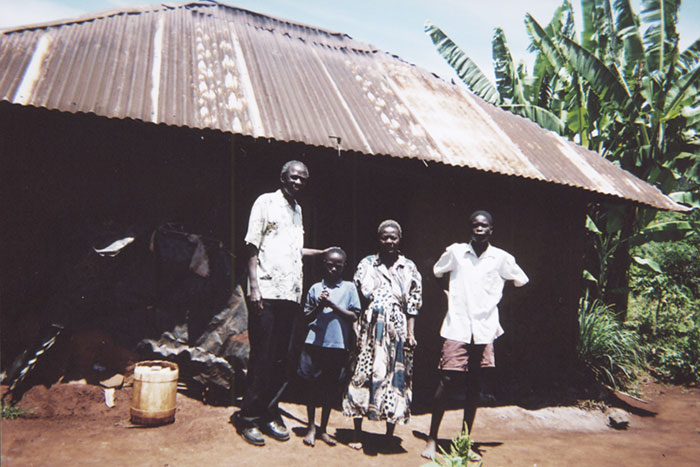
Gilbert Oteyo with Gawdensia Anyango, a surviving wife of Jacob Odawo , to whom a framed copy of his portrait was given, February 2007. © Pitt Rivers Museum.
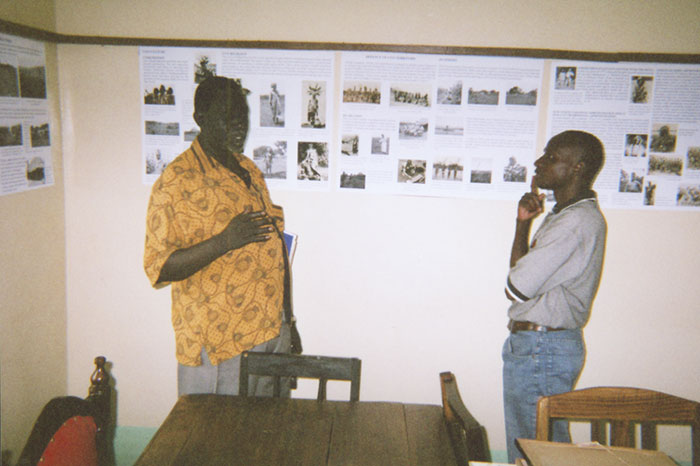
An exhibition assistant with a visitor to the exhibition at Bondo Town Council Hall - 12 th to 14 th February 2007. © Pitt Rivers Museum.
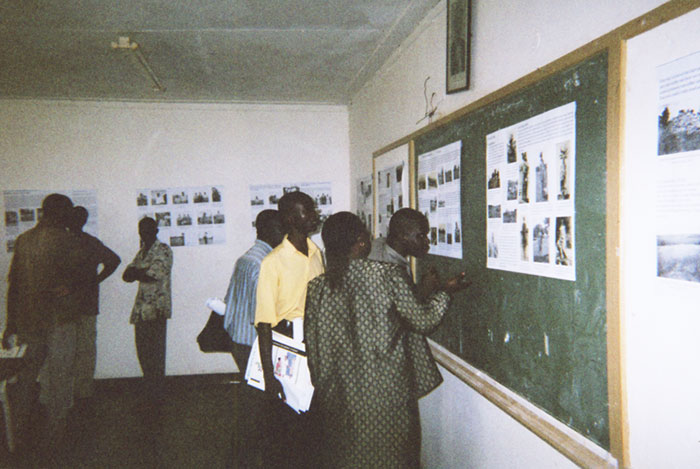
Visitors interrogating the displays at Siaya Farmers Training Centre (FTC) Hall - 15th to 17th February 2007. © Pitt Rivers Museum.
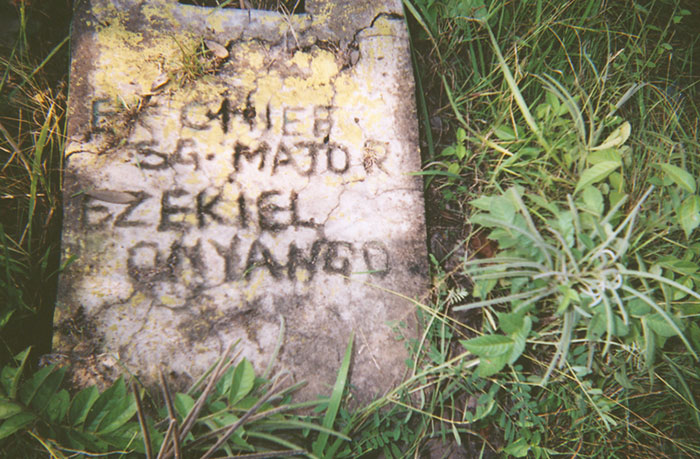
The grave of Ezekiel Onyango of Kadimo in Yimbo location. © Pitt Rivers Museum.
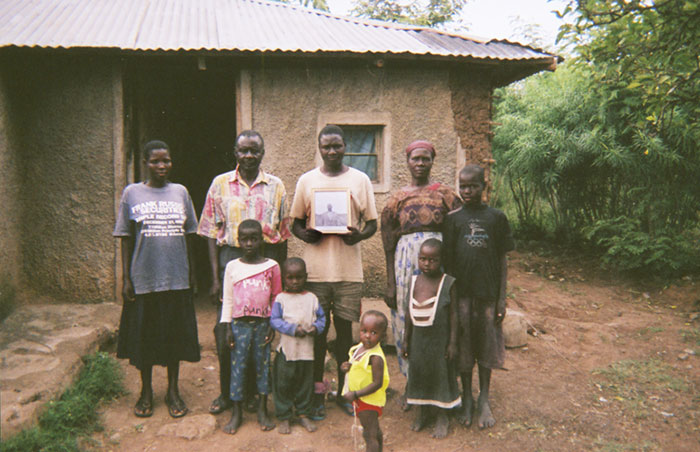
The family of Ezekiel Onyango of Kadimo in Yimbo location, holding a framed copy of Evans-Pritchard's 1936 portrait of him. © Pitt Rivers Museum.
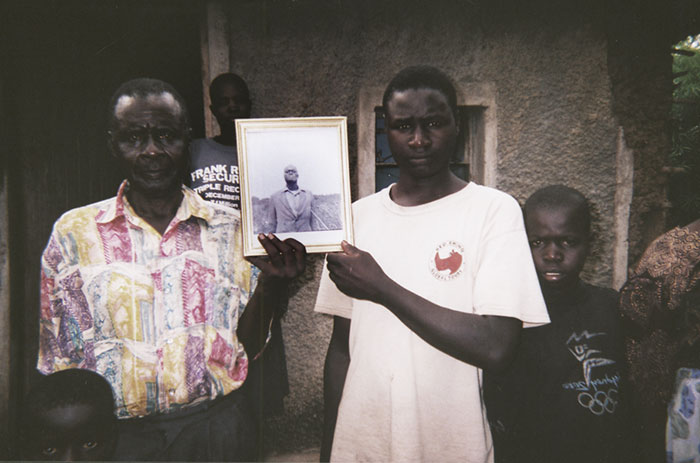
Charles Obewa, son of Ezekiel Onyango's third wife, with his son, holding the framed copy of Evans-Pritchard's 1936 portrait of Ezekiel Onyango ( 1998.349.53.1 ). © Pitt Rivers Museum.
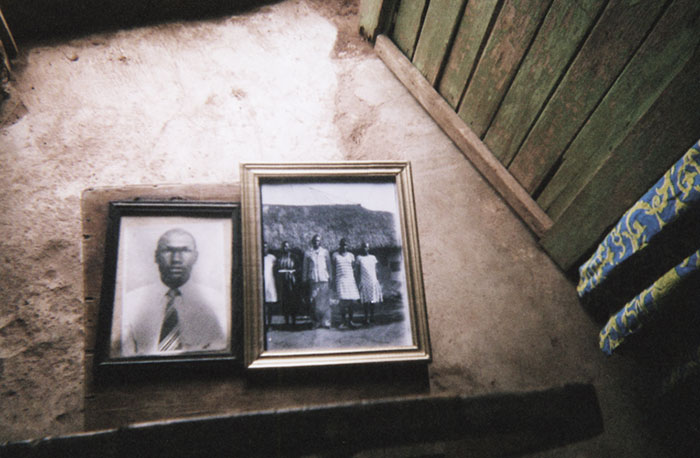
A framed copy of Evans-Pritchard's portrait of Chief Owuor and several of his wives ( 1998.349.192.1 ) placed in a doorway alongside one of the family's only other photographs, a portrait of one of Owuor's sons. © Pitt Rivers Museum.
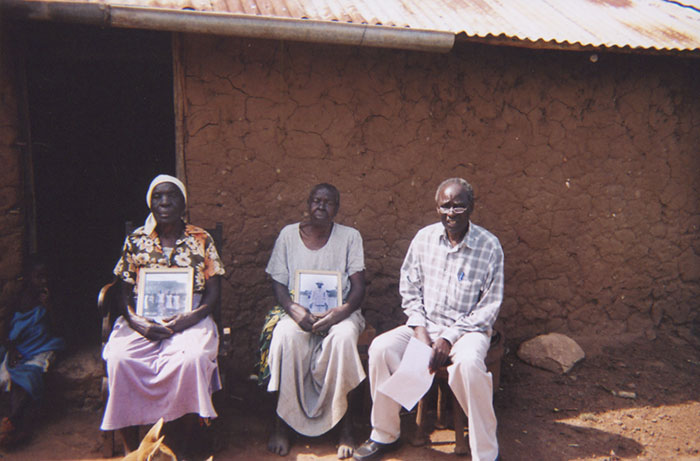
Gilbert Oteyo in conversation with two of Ismail Owuor Molo 's surviving three wives, Turfosa Omari (left), who Owuor married in 1936, and Dorina Owuor (Ndege) (centre), who was married in 1942, holding framed copies of Evans-Pritchard's portraits of Chief Owuor and his wives in 1936. Photograph taken February 2007. © Pitt Rivers Museum.
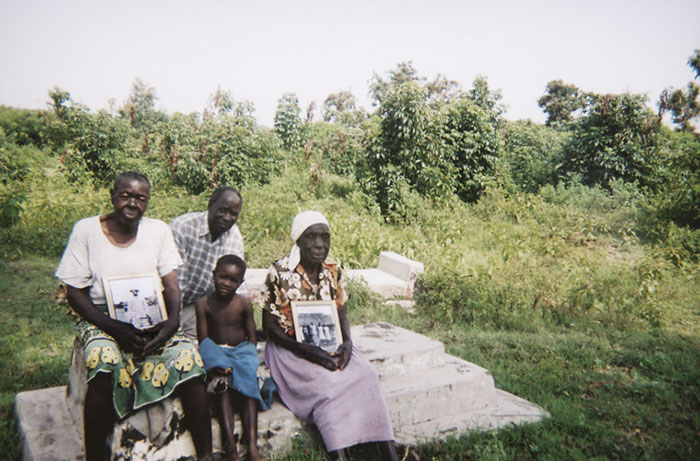
Gilbert Oteyo seated on the grave of Ismail Owuor Molo with two of his surviving three wives, Turfosa Omari (right), who married Owuor in 1936, and Dorina Owuor (Ndege) (left), who was married in 1942, holding framed copies of Evans-Pritchard's portraits of Chief Owuor and his wives in 1936. A grandchild sits by them. Photograph taken February 2007. © Pitt Rivers Museum.
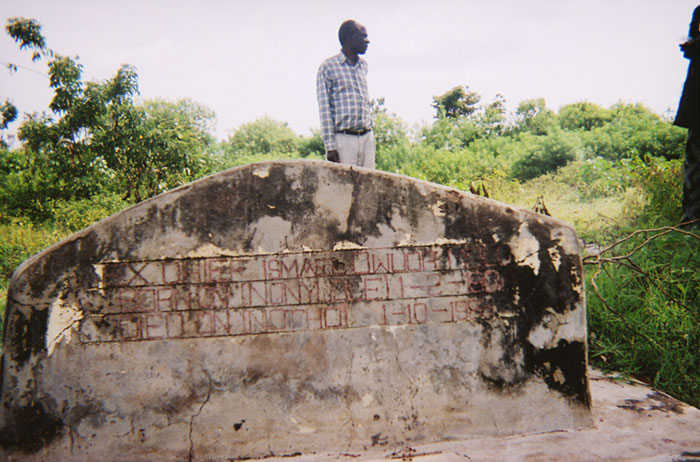
Gilbert Oteyo standing beside the grave of Ismail Owuor Molo (1901-1968). Photograph taken February 2007. © Pitt Rivers Museum.